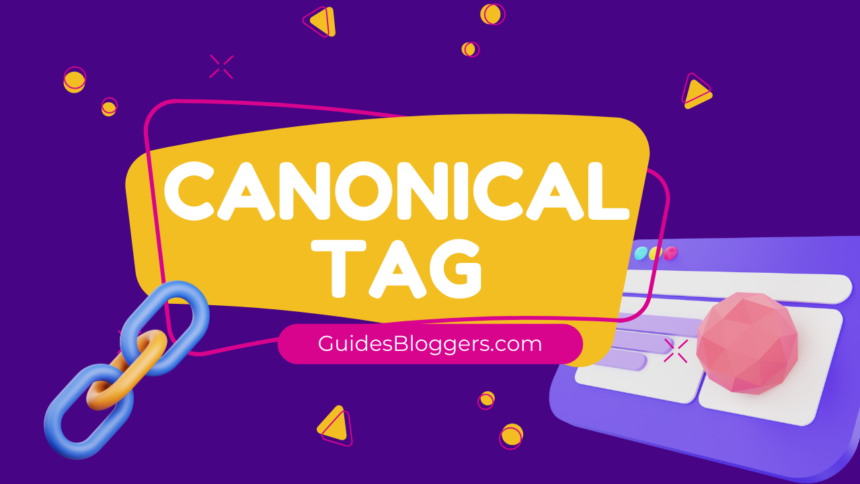Introduction
In the world of website optimization, search engine optimization (SEO) plays a crucial role in driving organic traffic and improving online visibility. One important aspect of SEO that website owners should be familiar with is the use of canonical tags. Canonical tags are HTML elements that help search engines understand the preferred version of content when multiple versions of a webpage exist. By implementing canonical tags correctly, website owners can avoid duplicate content issues and maximize their SEO efforts.
Understanding Canonical Tags
Canonical tags, also known as rel=canonical tags, are HTML elements that inform search engines about the preferred version of a webpage when there are multiple versions available. They serve as a signal to search engines, indicating which page should be considered the primary source of content.
How canonical tags help search engines understand preferred versions of content
Search engines encounter duplicate content issues when multiple versions of the same webpage exist, leading to confusion about which version to prioritize in search results. Canonical tags help search engines understand the preferred version and consolidate ranking signals, ensuring that the intended page receives the appropriate visibility.
Importance of proper implementation for SEO benefits
Proper implementation of canonical tags is crucial for reaping the SEO benefits. When implemented correctly, canonical tags can consolidate the ranking signals of duplicate pages, prevent keyword cannibalization, and ensure that the preferred page receives the maximum visibility and authority in search engine rankings.
Alternating Pages: Why and When?
Explanation of situations where alternating pages is necessary
There are several situations where alternating pages become necessary. For example, e-commerce websites often have multiple pages for the same product, such as different color variations or sizes. Similarly, content-driven websites may have different versions of the same article, such as a printer-friendly version or a version with additional multimedia elements.
How duplicate content can negatively impact SEO
Duplicate content can negatively impact SEO by diluting the ranking signals and confusing search engines about the preferred version of the content. It can lead to lower search engine rankings, reduced organic traffic, and missed opportunities for website visibility.
Instances when proper canonical tags can resolve duplicate content issues
Proper implementation of canonical tags can resolve duplicate content issues by indicating the preferred version to search engines. By specifying the canonical URL, website owners can consolidate ranking signals and ensure that the intended page receives the maximum visibility and authority in search engine rankings.
Also Learn How To Start Blog
Step-by-Step Guide to Implementing Canonical Tags
Identifying duplicate content issues
To implement canonical tags effectively, website owners need to identify instances of duplicate content. This can be done by conducting a thorough content audit and using SEO tools to identify pages with similar or identical content.
Selecting the preferred version of the content
Once duplicate content is identified, website owners should select the preferred version that they want to prioritize in search engine rankings. This can be the original version or a specific variation of the content.
Adding the canonical tag to the HTML head section
To implement the canonical tag, website owners need to add the rel=canonical element to the HTML head section of the preferred version of the content. This tag should point to the canonical URL, indicating the preferred version to search engines.
Verifying the implementation using SEO tools
After implementing the canonical tag, it is essential to verify its implementation using SEO tools. These tools can help ensure that the canonical tag is present and correctly pointing to the preferred version of the content.
Common Mistakes to Avoid
Incorrectly implementing canonical tags
One common mistake to avoid is incorrectly implementing canonical tags. This includes using incorrect URLs in the canonical tag or failing to add the tag to the preferred version of the content.
Overlooking dynamic content challenges
Website owners should be aware of the challenges posed by dynamic content, such as user-generated content or dynamically generated pages. Proper handling of dynamic content is crucial to avoid duplicate content issues.
Ignoring updates and changes in website structure
As websites evolve and undergo updates or changes in structure, it is essential to review and update canonical tags accordingly. Ignoring these updates can lead to outdated or incorrect canonicalization, negatively impacting SEO efforts.
Best Practices for Effective SEO
Regularly auditing and updating canonical tags
To maintain optimal SEO performance, website owners should regularly audit and update their canonical tags. This ensures that any changes in content or website structure are accurately reflected in the canonicalization.
Utilizing proper redirects when necessary
In some cases, website owners may need to redirect duplicate pages to the preferred version using 301 redirects. This ensures that search engines understand the preferred version and consolidate ranking signals accordingly.
Monitoring changes in search engine algorithms
Staying informed about changes in search engine algorithms is crucial for effective SEO. By keeping up with industry updates and best practices, website owners can adapt their canonicalization strategies to align with the latest guidelines.
Case Studies
Real-world examples of websites benefiting from proper canonical tag implementation
Several websites have experienced positive impacts on search engine rankings and organic traffic by implementing canonical tags correctly. These case studies highlight the effectiveness of canonicalization in resolving duplicate content issues and improving SEO performance.
Highlighting positive impacts on search engine rankings and traffic
Case studies demonstrate how proper canonical tag implementation can lead to improved search engine rankings and increased organic traffic. They showcase the potential SEO benefits that website owners can achieve through effective canonicalization.
Tools and Resources
Recommended SEO tools for identifying duplicate content
There are various SEO tools available that can help website owners identify duplicate content and implement canonical tags effectively. These tools provide insights and recommendations for optimizing website content.
Useful resources for staying updated on SEO best practices
Staying updated on SEO best practices is essential for maintaining a strong online presence. Websites, blogs, and forums dedicated to SEO provide valuable resources and insights into the latest trends and strategies.
Tips for troubleshooting common issues
In the process of implementing canonical tags, website owners may encounter common issues. Tips for troubleshooting these issues can help ensure the smooth implementation and effectiveness of canonicalization.
Conclusion
Recap of the importance of alternating pages with proper canonical tags
Proper implementation of canonical tags is crucial for resolving duplicate content issues and maximizing SEO efforts. By using canonical tags, website owners can ensure that search engines understand the preferred version of their content.
Encouragement for website owners to prioritize SEO through effective canonicalization
Website owners are encouraged to prioritize SEO through effective canonicalization. By implementing canonical tags correctly, they can enhance their website’s visibility, improve search engine rankings, and drive organic traffic.
Final thoughts on maintaining a strong online presence through SEO best practices
Maintaining a strong online presence requires a commitment to SEO best practices. By consistently optimizing websites through effective canonicalization and staying informed about industry updates, website owners can establish and maintain a competitive edge in the digital landscape.
What are canonical tags, and why are they important for SEO?
Canonical tags are HTML elements that specify the preferred version of a webpage, helping search engines avoid indexing duplicate content. They are crucial for maintaining a consistent and authoritative presence in search engine results.
When should I consider alternating pages with canonical tags?
You should consider alternating pages with canonical tags when you have duplicate content issues across your website. This includes scenarios like different URL variations leading to the same content or when you syndicate content on multiple pages.
How do canonical tags resolve duplicate content issues?
Canonical tags guide search engines to the preferred version of a page, consolidating the ranking signals for that specific URL. This helps prevent dilution of SEO efforts caused by multiple versions of the same content.
Can you provide a step-by-step guide for implementing canonical tags?
Certainly!Identify duplicate content.
Choose the preferred version of the content.
Insert the canonical tag in the HTML head section of the preferred page.
Verify the implementation using SEO tools.
What are some common mistakes to avoid when implementing canonical tags?
Common mistakes include incorrectly implementing canonical tags, overlooking dynamic content challenges, and failing to keep up with changes in website structure. It’s crucial to stay vigilant and regularly audit your canonical tag implementations.
How often should I audit and update canonical tags on my website?
Regular audits are essential, especially when there are changes in content or website structure. As a best practice, review and update canonical tags periodically to ensure they align with your current SEO strategy.
Are there any specific SEO tools for identifying duplicate content?
Yes, there are several tools available, such as Screaming Frog, SEMrush, and Moz, which can help you identify duplicate content issues on your website.
Can canonical tags be used to address issues with dynamic content?
Yes, canonical tags can be used for dynamic content by specifying the preferred version of the dynamically generated pages. However, it requires careful consideration and implementation to ensure accuracy.
How do I stay updated on SEO best practices and changes in search engine algorithms?
Keep an eye on reputable SEO blogs, attend industry conferences, and follow major search engine updates. Utilize resources from Google, Bing, and other search engines to stay informed about the latest SEO trends and guidelines.
What are the potential benefits of implementing canonical tags correctly?
Proper canonical tag implementation can lead to improved search engine rankings, enhanced user experience, and more efficient crawling and indexing by search engines. It also helps in maintaining a clean and authoritative online presence.












